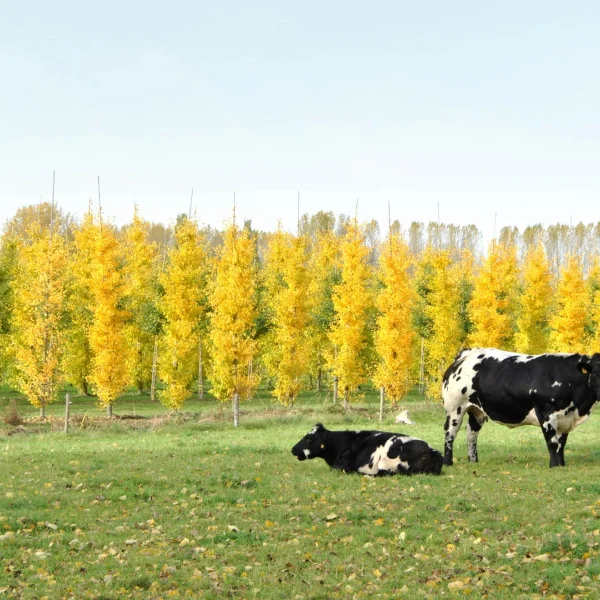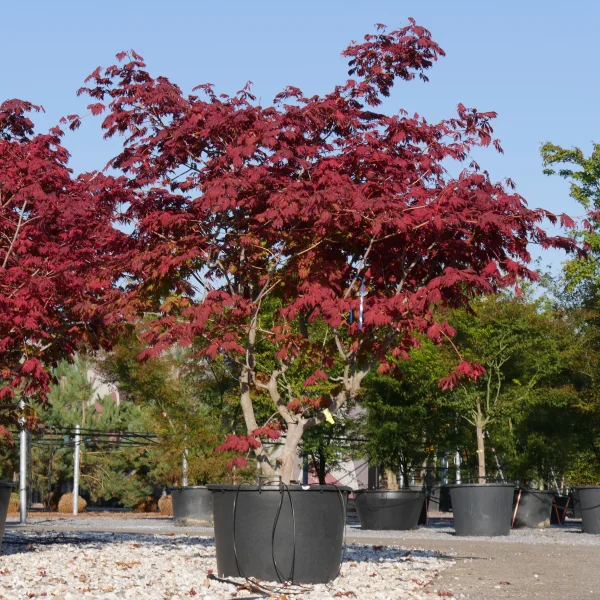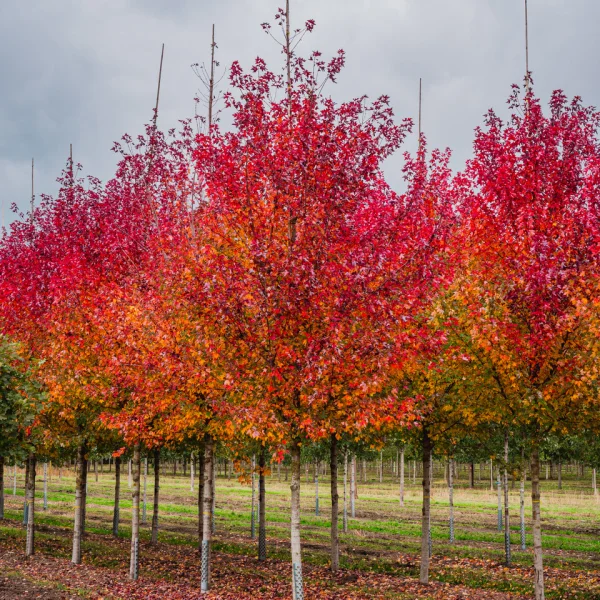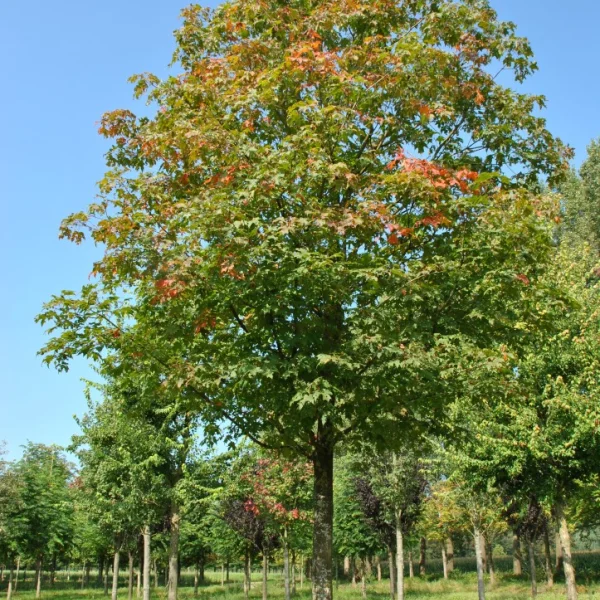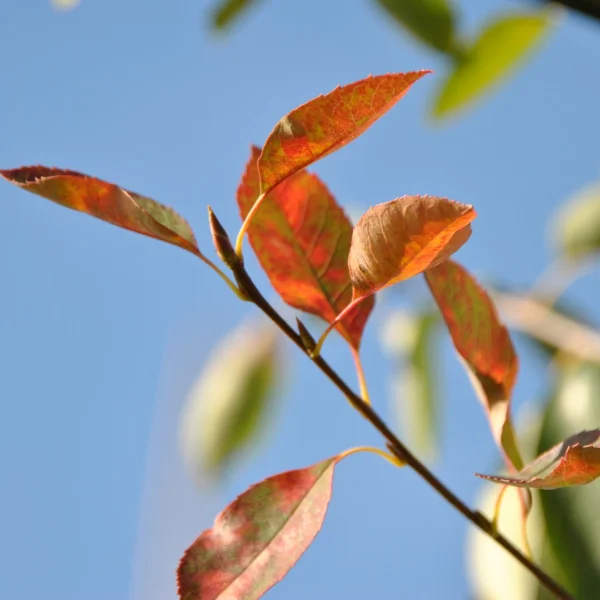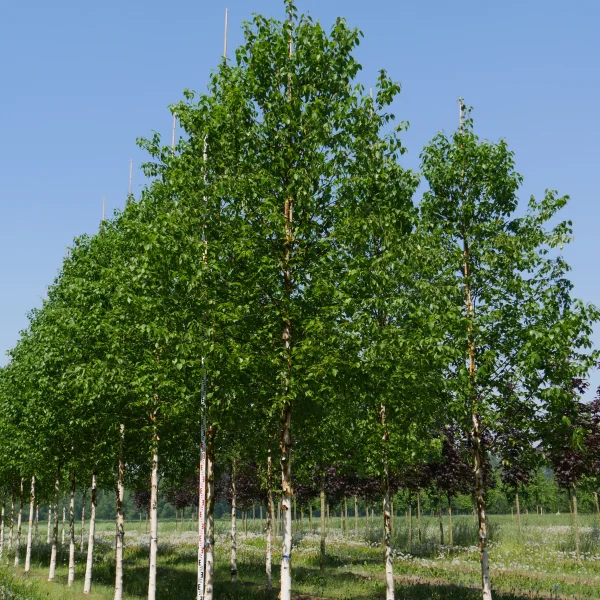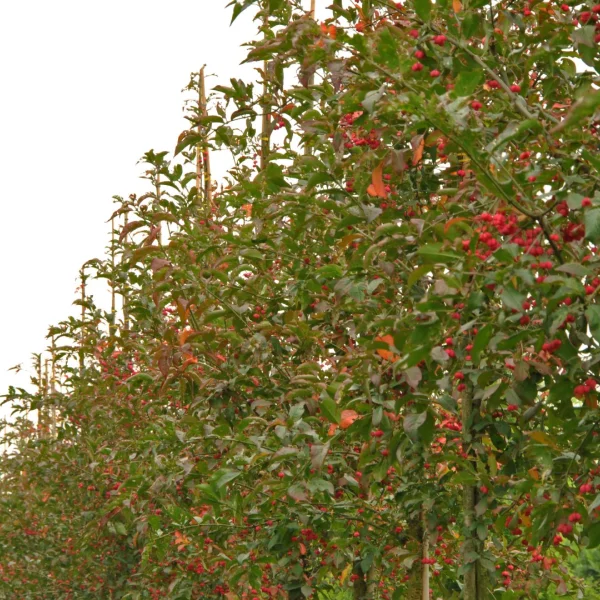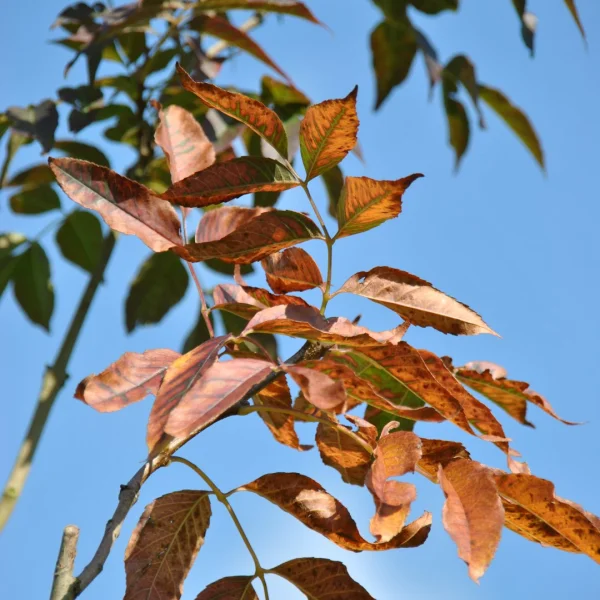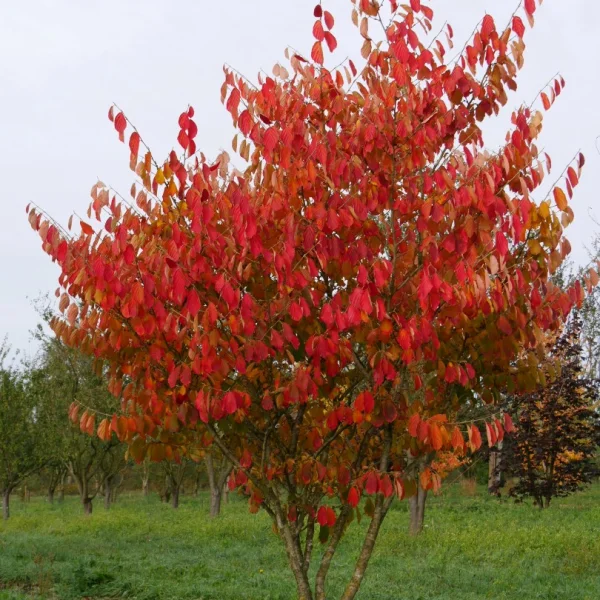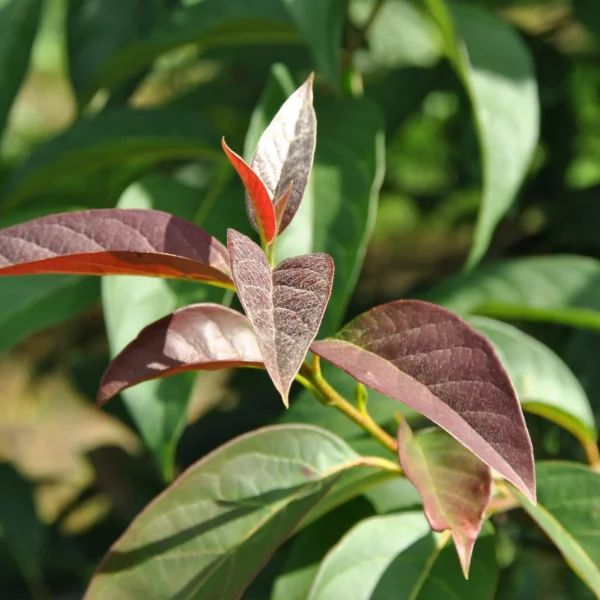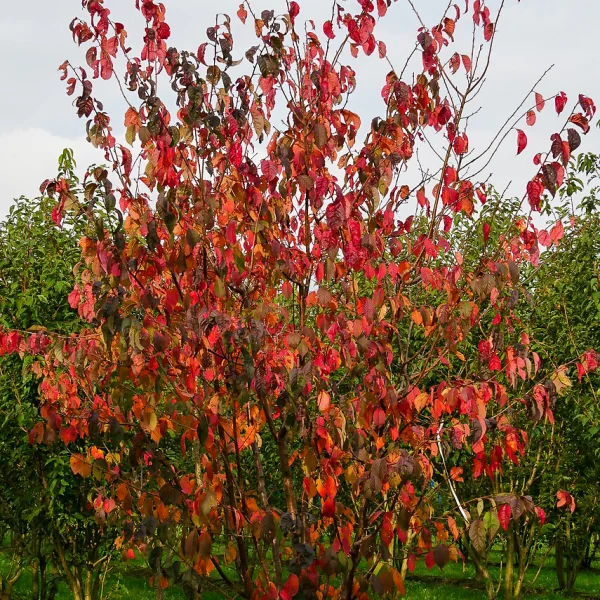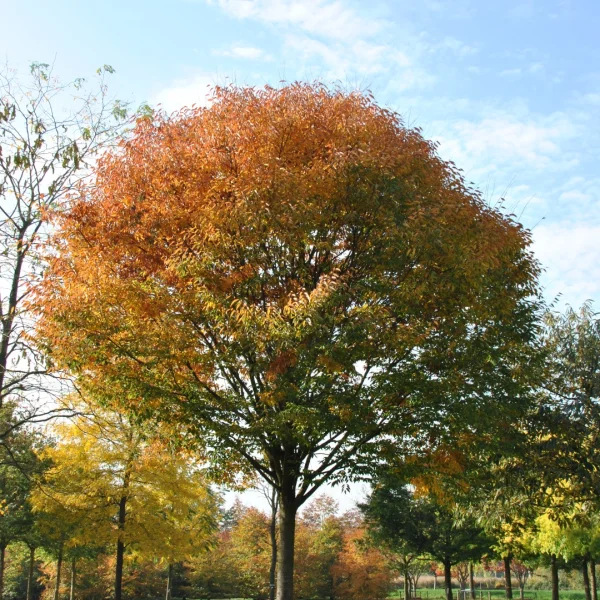A special autumn color? Choose a variety!
Some main species usually have a beautiful red autumn colour: we say usually because it can vary somewhat. That is because a species, for example Acer rubrum, is cultivated from the seed and each descendent has its own genetic material. Of course they all share the main characteristics of Acer rubrum, but within the species there may be considerable differences such as habit, crown shape, inflorescence or autumn colouring. Since this wide variety is not always preferred and customers like to see certain characteristics appearing in a whole batch, selections are made from the most common species of tree. Trees are selected from seedlings on the basis of certain positive characteristics.
One such characteristic may be a particularly attractive autumn colour. Basic material is taken from a selected tree and the tree is vegetatively propagated by means of, say, cuttings or grafts. This method of propagation means all of the ‘descendants’ have the same genes as the mother tree. Selections are introduced to the market as cultivars, for example Acer rubrum ‘Brandywine’ with its flaming red autumn foliage. So, in order to be sure the autumn colour will be striking, it is best to choose a cultivar that has been specifically selected for that purpose.
Both ground humidity and temperature influence the autumn colour
Chlorophyll gives the leaves their green colour. Chlorophyll is necessary for photosynthesis, the chemical reaction that turns sunlight into plant sugars. As the nights get longer, the production of chlorophyll slows down and even stops entirely in the course of time. Consequently, the other colours that are also present in the leaf are revealed to a greater or lesser extent. This process is affected by a number of things. It is not yet known exactly how this comes about but we do know that soil humidity and temperature are determining factors.
A succession of warm, sunny days and cold but frost-free nights result in the most spectacular autumn colouring. Ground humidity also has an effect; severe drought or a long, wet period cause stress which is also more likely to cause the foliage to turn a more intense colour. A long, dry summer causes autumn colouring to begin later on and a dry autumn will result in the colours lasting longer. Freezing temperatures soon put an end to the display as the leaves fall from the branches.
 English
English
 English (United Kingdom)
English (United Kingdom)
 Nederlands
Nederlands
 Nederlands (België)
Nederlands (België)
 Deutsch
Deutsch
 français
français
 čeština
čeština
 polski
polski
 español
español
 română
română
 dansk
dansk
 svenska
svenska
 magyar
magyar
 Türkçe
Türkçe
 slovenčina
slovenčina
 русский
русский
 norsk
norsk







